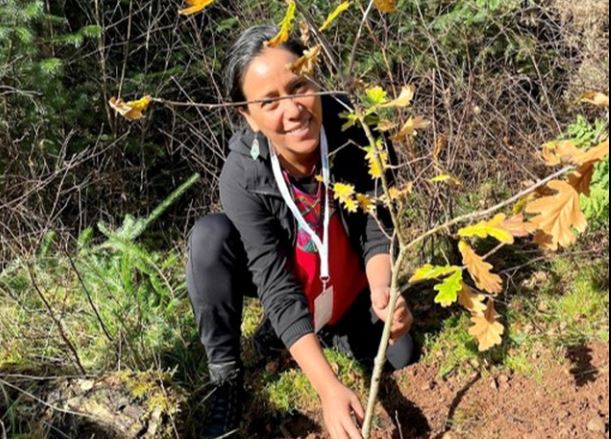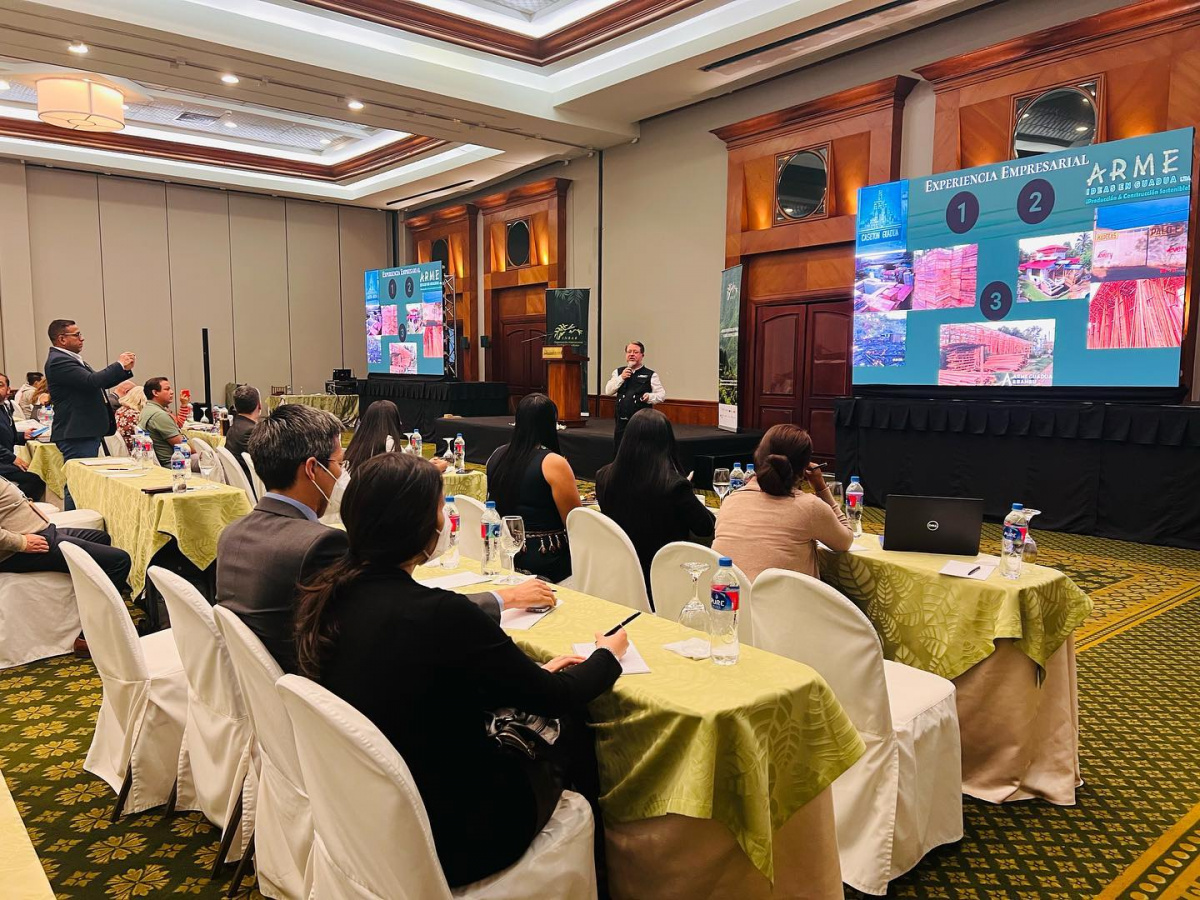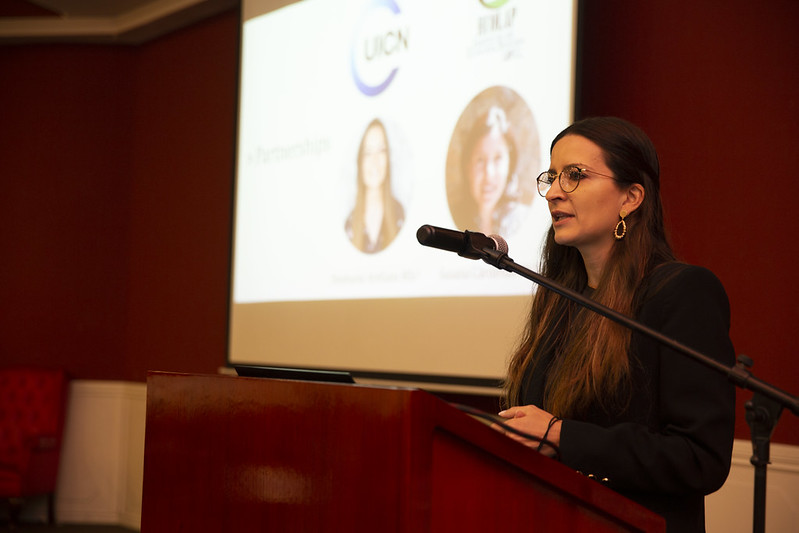The Gender-Based Violence and Environment Linkages Center works with Indigenous women to defend Mother Earth and her daughters
Indigenous women and girls are key actors in maintaining environmental sustainability – so why are they experiencing rising gender-based violence in connection with the environment and what can be done to stop it?

Photo: IUCN-Pauline Buffle
“Around the world, Indigenous women and girls have an intrinsic relationship with Mother Earth.” - Dr Anita Tzec
Dr. Tzec continues, “As the custodians and caretakers of Indigenous knowledge systems on natural sciences – such as stewarding territories and seascapes that provide essential food security – we are the sacred promise and covenant with our future generations as we pass knowledge and techniques between grandmothers, mothers, and daughters.”
An Indigenous Belizean Maya Yucatec leader, Dr. Tzec works at the International Union for Conservation of Nature (IUCN) to ensure environmental action works closely in partnership with Indigenous peoples to usher a world that protects nature and advances Indigenous rights. She shares, “Our insights and leadership show the promise of how the globe can achieve a better balance and harmony with nature for all people.”
Indeed, though Indigenous peoples represent 5% of the global population, they manage or have tenure over approximately 40% of protected areas and 37% of ecologically intact landscapes – and effectively. For example, in Bolivia, Colombia, and Brazil, emerging research shows that lands managed by Indigenous peoples emit at least 73% less carbon than those managed by other groups. Yet, around the world, as environmental degradation and climate change threatens natural environments, Indigenous women and girls face the rising dual threat of gender-based violence (GBV).
Centering attention and action towards addressing gender-based violence barriers
A large-scale study conducted by IUCN under its partnership with the United States Agency on International Development (USAID) on Advancing Gender in the Environment (AGENT) found that Indigenous women defending the environment are facing the rising use of GBV as a tactic to silence their activism and work. Indigenous women are also facing increased risk of GBV during land grabbing by large-scale activities – and when displaced, access to territories and resources are upended, furthering increased exposure to violence.
Global action has been growing on addressing GBV and environment linkages. Chief among these, USAID worked with AGENT to turn its research into the Gender-Based Violence and Environment Linkages Center (GBV-ENV Center) while distributing grants for projects around the world through Resilient, Inclusive, and Sustainable Environments (RISE). The GBV-ENV Center has since received over 250 requests from around the globe for information and support to address gaps at project, program, institutional, and policy levels. RISE grants challenge is supporting nine projects in eight countries – reaching over 11,500 direct and 30,000 indirect beneficiaries and training over 400 people on GBV prevention and response. In the coming months, AGENT will launch the newest call for RISE grants, with an emphasis on COVID-19 adaptations, climate change, and protecting defenders.
The results of these requests and capacity development initiatives are also emerging in policy spheres for the first time. At its 2021 World Conservation Congress, IUCN Members – composed of governments, Indigenous peoples organizations, and civil society – voted on the first global resolution that includes the use of GBV against environmental – especially Indigenous – defenders.
In January, the UN Special Rapporteur called for submissions on violence against women (VAW) and Indigenous women and girls – in March, the Rapporteur called for insights on VAW and climate change linkages. The GBV-ENV Center responded to both calls, emphasizing the safety of Indigenous women and girls during the concurrent climate, biodiversity, and pandemic crises. During the Commission on the Status of Women last month, the focus was placed on gender and climate change for the first time – and IUCN collaborated with UN Women to highlight GBV and climate connections, including Indigenous women and girls, in a policy brief to inform global debates and statements.
Looking forward, momentum continues as the draft Gender Plan of Action to the Convention on Biological Diversity (CBD) (citing IUCN’s AGENT research) calls for objectives to address GBV in access to and conservation of biodiversity – with specific mention of women environmental human rights defenders and Indigenous women and girls.
As Lola Cabnal, a Maya Q’eqchi’ leader from Guatemala’s Ak’Tenamit shared, “It is necessary and urgent to have direct engagements with communities and Indigenous peoples, to create answers to the problems and crises that make women, girls, and boys with scarce resources more vulnerable… And all of this applies to ways in which gender-based violence and environment links can be addressed as well as strengthening an adaptable climate justice.”
The blog is by Jamie Wen-Besson and Dr. Anita Tzec. It was first published on USAID's platform, climatelinks.



